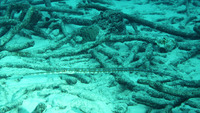|
| 질의: fishes | 결과: 889번째/13222 | |
Fistularia tabacaria, Cornet fish: fisheries

| 해상도: 640x363
파일크기: 85259 Bytes
등록시간: 2008:04:15 23:34:00
|
Fistularia tabacaria, Cornet fish: fisheries
Image of Fistularia tabacaria, Cornet fish, Trompeta, Tururu, Agulha buzina, Blåplettet tobakspibefisk, Tubo-tubo, Vioolvis, Cornetfish, Bluespotted Cornetfish, Tobacco trumpetfish, Trumpetfish, Unarmed trumpetfish, Bluespotted cornetfish, Cornetfish, Trumpet fish, Hountoui-houg-toui, Cornette à taches bleues, Cornette tachetée, Fistulaire tabac, Poisson-trompette, Fistulaire, Flötenmaul, Pfeifenfisch, Kurukur, Madara-yagara, Sweep, Swip, Viool, Fistulka, Corneta, Peixe-pau, Peixe-tabaco, Agulhão-trombeta, Agulheta, Cachimbau, Peixe-corneta, Peixe-trombeta, Petimbo, Petimbuaba, Trombeta, Bombom, Corneta-malhada, Tabaco, Pau, Corneta azul, Trompeta, Pez corneta, Trompetero, Corneta azul, Flauta, Guia pandala, Pipa, Corneta látigo, Trompita, Krawach netj, Krawach netj, Mbimbann
Randall, J.E.
|
^o^
동물그림창고 똑똑전화 누리집
^o^
|
|